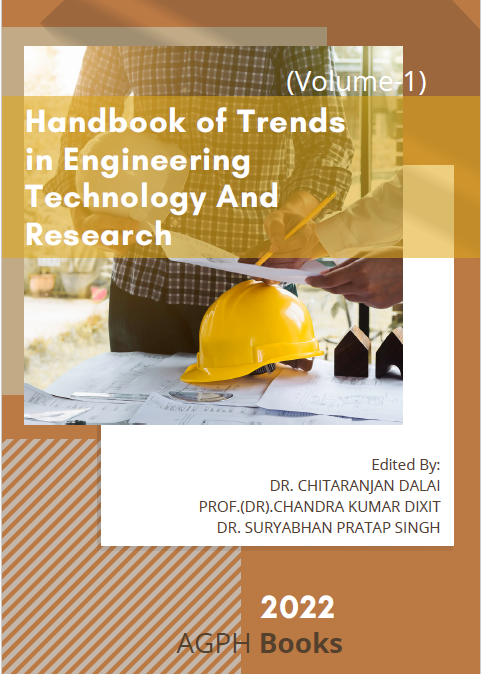A State of Art Review on Advancements in Vehicular Embedded System Technologies
Keywords:
Vehicular Embedded System, DSPs, ASICs, FPGAsAbstract
In the last two decades, the no. of the computer-based features incorporated in automobiles has increased significantly. Even though vehicle manufacturing is expected to rise modestly in the next years, the embedded electronics, and specifically embedded software, is rising. In addition, hardware components' quality and performance are improving whereas their price is declining. Many novel functionalities that would be prohibitively expensive or impossible to implement using the mechanical as well as hydraulic technology may now be implemented using the software technology, thus addressing the end user's needs in the terms of safety as well as comfort. Customers can now purchase a secure, effective, and customised vehicle owing to such technologies, whereas carmakers seem to be able to the master product differentiation as well as the innovation. Several studies have indeed been undertaken to improve embedded system design and the newest technologies to create smart automobiles, which are reviewed in this article. DSPs, ASICs, FPGAs, as well as other microprocessor-based embedded systems are only a few of the many options out now (field-programmable gate arrays). There has been a lot of recent discussion on the use of AI (artificial intelligence) as well as fuzzy logic controllers in automobiles.
References
[1] Ahmed, M., Zheng, Y., Amine, A., Fathiannasab, H., & Chen, Z. (2021). The role of artificial intelligence in the mass adoption of electric vehicles. Joule, 5(9), 2296-2322. https://doi.org/10.1016/j.joule.2021.07.012
[2] Boukerche, A., & De Grande, R. E. (2018). Vehicular cloud computing: Architectures, applications, and mobility. Computer Networks, 135, 171-189. https://doi.org/10.1016/j.comnet.2018.01.004
[3] Doolan, R., & Muntean, G. M. (2013). VANET-enabled eco-friendly road characteristics-aware routing for vehicular traffic. IEEE Vehicular Technology Conference. https://doi.org/10.1109/VTCSpring.2013.6692807
[4] Huang, C., Lu, R., & Choo, K. K. R. (2017). Vehicular Fog Computing: Architecture, Use Case, and Security and Forensic Challenges. IEEE Communications Magazine, 55(11), 105-111. https://doi.org/10.1109/MCOM.2017.1700322
[5] Jabbarpour, M. R., Marefat, A., Jalooli, A., & Zarrabi, H. (2019). Could-based vehicular networks: a taxonomy, survey, and conceptual hybrid architecture. Wireless Networks, 25(1), 335-354. https://doi.org/10.1007/s11276-017-1563-5
[6] Jiau, M. K., Huang, S. C., Hwang, J. N., & Vasilakos, A. V. (2015). Multimedia Services in Cloud-Based Vehicular Networks. IEEE Intelligent Transportation Systems Magazine, 7(3), 62-79. https://doi.org/10.1109/MITS.2015.2417974
[7] Karagiannis, G., Altintas, O., Ekici, E., Heijenk, G., Jarupan, B., Lin, K., & Weil, T. (2011). Vehicular networking: A survey and tutorial on requirements, architectures, challenges, standards and solutions. IEEE Communications Surveys and Tutorials, 13(4), 584-616. https://doi.org/10.1109/SURV.2011.061411.00019
[8] Qureshi, K. N., Abdullah, A. H., & Anwar, R. W. (2014). Wireless sensor based hybrid architecture for vehicular Ad hoc networks. Telkomnika (Telecommunication Computing Electronics and Control), 12(4), 942-949. https://doi.org/10.12928/telkomnika.v12i4.537
[9] Rahim, A., Kong, X., Xia, F., Ning, Z., Ullah, N., Wang, J., & Das, S. K. (2018). Vehicular Social Networks: A survey. Pervasive and Mobile Computing, 43, 96-113. https://doi.org/10.1016/j.pmcj.2017.12.004
[10] Ratnani, C., Vaghela, V. B., & Shah, D. J. (2015). A novel architecture for vehicular traffic control. Proceedings - 2015 IEEE International Conference on Computational Intelligence and Communication Technology, CICT 2015, 277-282. https://doi.org/10.1109/CICT.2015.141
[11] Singh, P. K., Nandi, S. K., & Nandi, S. (2019). A tutorial survey on vehicular communication state of the art, and future research directions. Vehicular Communications, 18, 100164. https://doi.org/10.1016/j.vehcom.2019.100164
[12] Whaiduzzaman, M., Sookhak, M., Gani, A., & Buyya, R. (2014). A survey on vehicular cloud computing. Journal of Network and Computer Applications, 40(1), 325-344. https://doi.org/10.1016/j.jnca.2013.08.004
[13] Zhou, S., Netalkar, P. P., Chang, Y., Xu, Y., & Chao, J. (2018). The MEC-Based Architecture Design for Low-Latency and Fast Hand-Off Vehicular Networking. IEEE Vehicular Technology Conference, 2018-Augus, 1-7. https://doi.org/10.1109/VTCFall.2018.8690790




